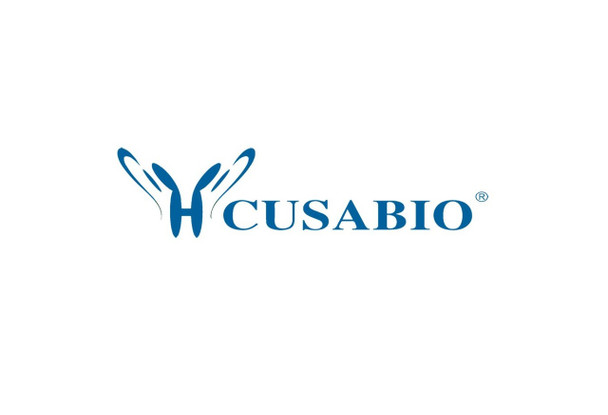Cusabio Human Recombinants
Recombinant Human BCL2/adenovirus E1B 19KDA protein-interacting protein 3-like (BNIP3L) | CSB-YP002767HU
- SKU:
- CSB-YP002767HU
- Availability:
- 25 - 35 Working Days
Description
Recombinant Human BCL2/adenovirus E1B 19KDA protein-interacting protein 3-like (BNIP3L) | CSB-YP002767HU | Cusabio
Alternative Name(s): Adenovirus E1B19K-binding protein B5 BCL2/adenovirus E1B 19KDA protein-interacting protein 3A NIP3-like protein X Short name: NIP3L
Gene Names: BNIP3L
Research Areas: Cancer
Organism: Homo sapiens (Human)
AA Sequence: MSSHLVEPPPPLHNNNNNCEENEQSLPPPAGLNSSWVELPMNSSNGNDNGNGKNGGLEHVPSSSSIHNGDMEKILLDAQHESGQSSSRGSSHCDSPSPQEDGQIMFDVEMHTSRDHSSQSEEEVVEGEKEVEALKKSADWVSDWSSRPENIPPKEFHFRHPKRSVSLSMRKSGAMKKGGIFSAEFLKVFIPSLFLSHVLALGLGIYIGKRLSTPSASTY
Source: Yeast
Tag Info: N-terminal 6xHis-tagged
Expression Region: 1-219aa
Sequence Info: Full Length
MW: 25.9 kDa
Purity: Greater than 90% as determined by SDS-PAGE.
Relevance: Induces apoptosis. Interacts with viral and cellular anti-apoptosis proteins. Can overcome the suppressors BCL-2 and BCL-XL, although high levels of BCL-XL expression will inhibit apoptosis. Inhibits apoptosis induced by BNIP3. Involved in mitochondrial quality control via its interaction with SPATA18/MIEAP: in response to mitochondrial damage, participates to mitochondrial protein catabolic process (also named MALM) leading to the degradation of damaged proteins inside mitochondria. The physical interaction of SPATA18/MIEAP, BNIP3 and BNIP3L/NIX at the mitochondrial outer membrane regulates the opening of a pore in the mitochondrial double membrane in order to mediate the translocation of lysosomal proteins from the cytoplasm to the mitochondrial matrix. May function as a tumor suppressor.
Reference: "The proapoptotic factor Nix is coexpressed with Bcl-xL during terminal erythroid differentiation." Aerbajinai W., Giattina M., Lee Y.T., Raffeld M., Miller J.L.Blood 102:712-717(2003)
Storage: The shelf life is related to many factors, storage state, buffer ingredients, storage temperature and the stability of the protein itself. Generally, the shelf life of liquid form is 6 months at -20?/-80?. The shelf life of lyophilized form is 12 months at -20?/-80?.
Notes: Repeated freezing and thawing is not recommended. Store working aliquots at 4? for up to one week.
Function: Induces apoptosis. Interacts with viral and cellular anti-apoptosis proteins. Can overcome the suppressors BCL-2 and BCL-XL, although high levels of BCL-XL expression will inhibit apoptosis. Inhibits apoptosis induced by BNIP3. Involved in mitochondrial quality control via its interaction with SPATA18/MIEAP
Involvement in disease:
Subcellular Location: Nucleus envelope, Endoplasmic reticulum, Mitochondrion outer membrane, Membrane, Single-pass membrane protein
Protein Families: NIP3 family
Tissue Specificity:
Paythway: Mitophagy-animal
Form: Liquid or Lyophilized powder
Buffer: If the delivery form is liquid, the default storage buffer is Tris/PBS-based buffer, 5%-50% glycerol. If the delivery form is lyophilized powder, the buffer before lyophilization is Tris/PBS-based buffer, 6% Trehalose, pH 8.0.
Reconstitution: We recommend that this vial be briefly centrifuged prior to opening to bring the contents to the bottom. Please reconstitute protein in deionized sterile water to a concentration of 0.1-1.0 mg/mL.We recommend to add 5-50% of glycerol (final concentration) and aliquot for long-term storage at -20?/-80?. Our default final concentration of glycerol is 50%. Customers could use it as reference.
Uniprot ID: O60238
HGNC Database Link: HGNC
UniGene Database Link: UniGene
KEGG Database Link: KEGG
STRING Database Link: STRING
OMIM Database Link: OMIM









